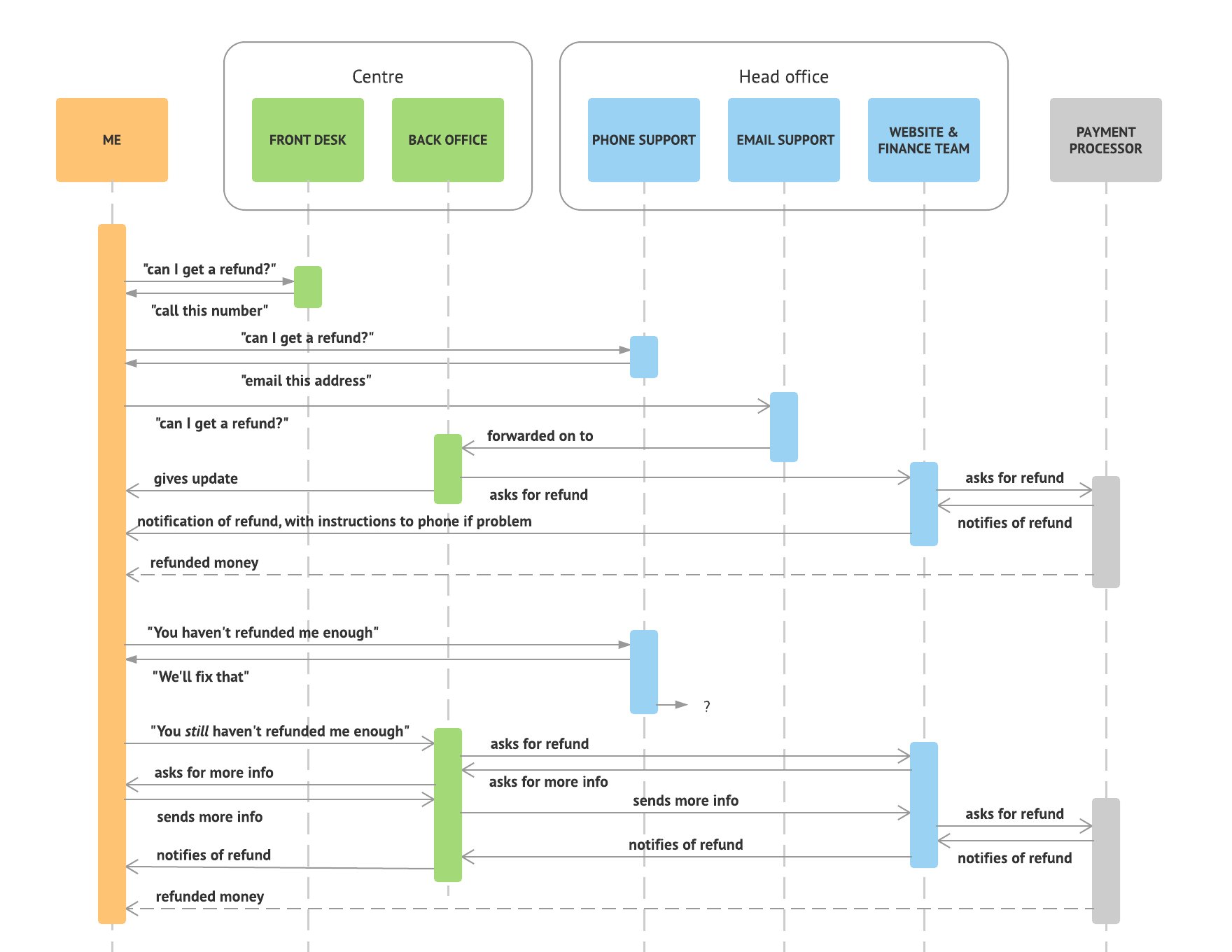Getting a Refund
In December I booked a swimming session online with Better. After my booking, the website proclaimed ‘there has been an error please try again’. Four attempts later I found out that each booking had actually been successful and the message was misleading me into making repeat purchases1.
I thought getting a refund would be easy but it took a month of phone calls and emails. Myself, and the person I ended up in contact with, were so far removed from the website and refund process that I got refunded the incorrect amount. Twice. Now I have more money than I was expecting because they refunded me for the one ticket that I did use to go swimming.
To help me understand what was going on I thought a tool that is normally reserved for the complexities of software might help — a UML sequence diagram.
So here it is. I started my journey at the front desk of the leisure centre since my booking confirmation email and the booking website didn’t have any contact details that looked appropriate for my problem. I’ve grouped the participants into their location — those at the centre I swim at, and those at the mysterious ‘head office’. The parts that are further away from me that I didn’t directly interact with are pieced together from email threads I was forwarded and updates I received.
I made the digram because I have a fascination of the internal processes and structure of companies and how, as a customer asking for help, you see a small slice of them. After making it I wondered why it might have been hard for me to get my refund. I noticed that the entities that make up the head office never appeared to talk to each other which might be the cause of some of the problems I faced.
-
I think this is an excellent way for a business to make money. ↩
You can read more by me, follow me on Mastodon or subscribe.

I've just published my book - Build a Database Server. Learn how real databases like PostgreSQL and MySQL work by building your own database from scratch.
Find out more and see a preview.
